Download Printable Cilantro Growing Guide »
You either love it or you hate it, but if you love it, you have to grow it! Cilantro is an incredibly easy herb to grow, and it thrives in a wide variety of conditions.
Fresh cilantro is a great addition to a ton of signature dishes from cuisines around the world. The leaves of this popular herb add a ton of bright flavor to your cooking, while the seed heads can be harvested as coriander to add rich, layered flavors to your favorite dishes. Let’s talk about how to grow cilantro!
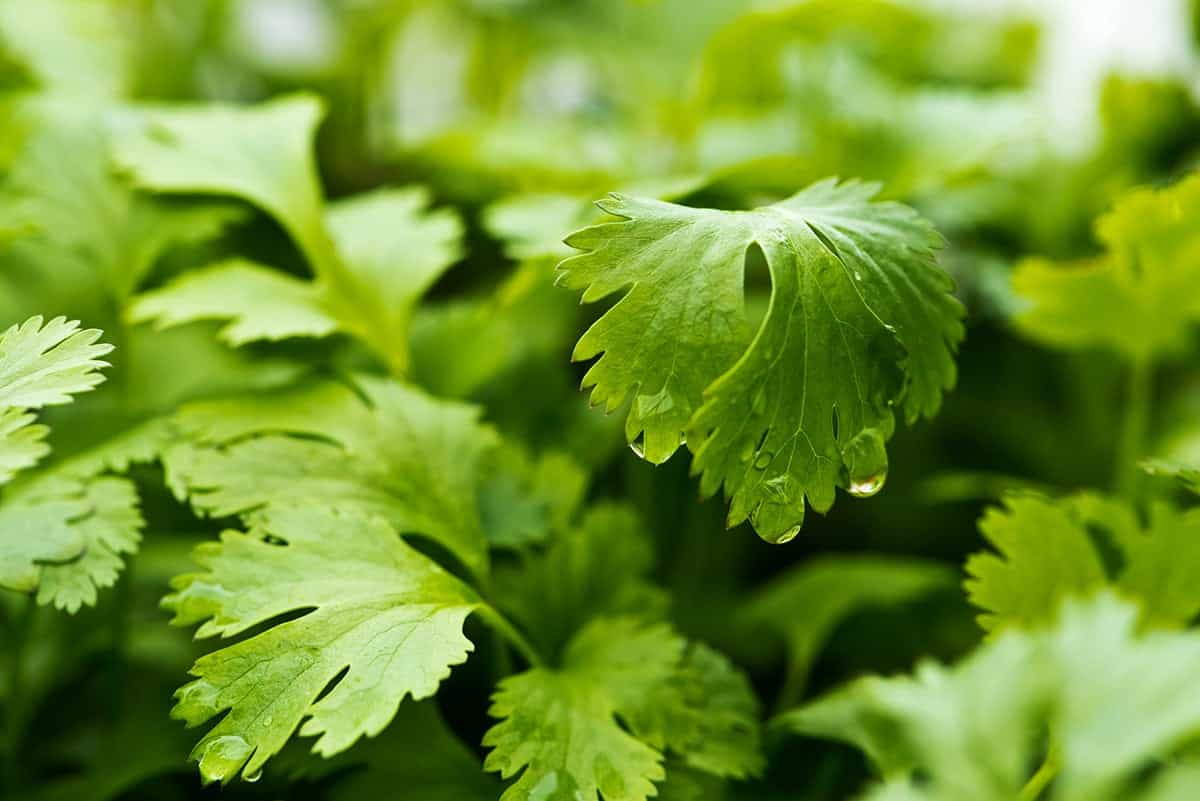
Table of Contents
What’s the difference between cilantro and coriander?
Both cilantro (leaves and stems of the herb) and coriander (seeds) come from the same plant. Cilantro (coriandrum sativum) is the name of the entire plant, but if you let the flower stalks of the plant go to seed, the seeds themselves are considered coriander. Coriander can be used whole, crushed, or ground. Coriander has a similar flavor to the cilantro leaves, but with a touch more earthy flavor.

How is cilantro used?
Cilantro is used to add bright, pungent flavor to many dishes in Asian and Latin American cuisines. You’ll often find cilantro flavoring recipes like guacamole, fresh spring rolls, salsa, and fish tacos. Typically, cilantro leaves are used minced or chopped in dishes, but some folks use the whole leaves and stems (like in fresh spring rolls) in their recipes.
Should I plant cilantro seeds or plants?
Cilantro can be either directly sowed from seeds or planted from transplant seedlings. But because cilantro grows quickly in cooler temperatures and has a tap root that doesn’t like being disturbed, most folks direct sow with great results.
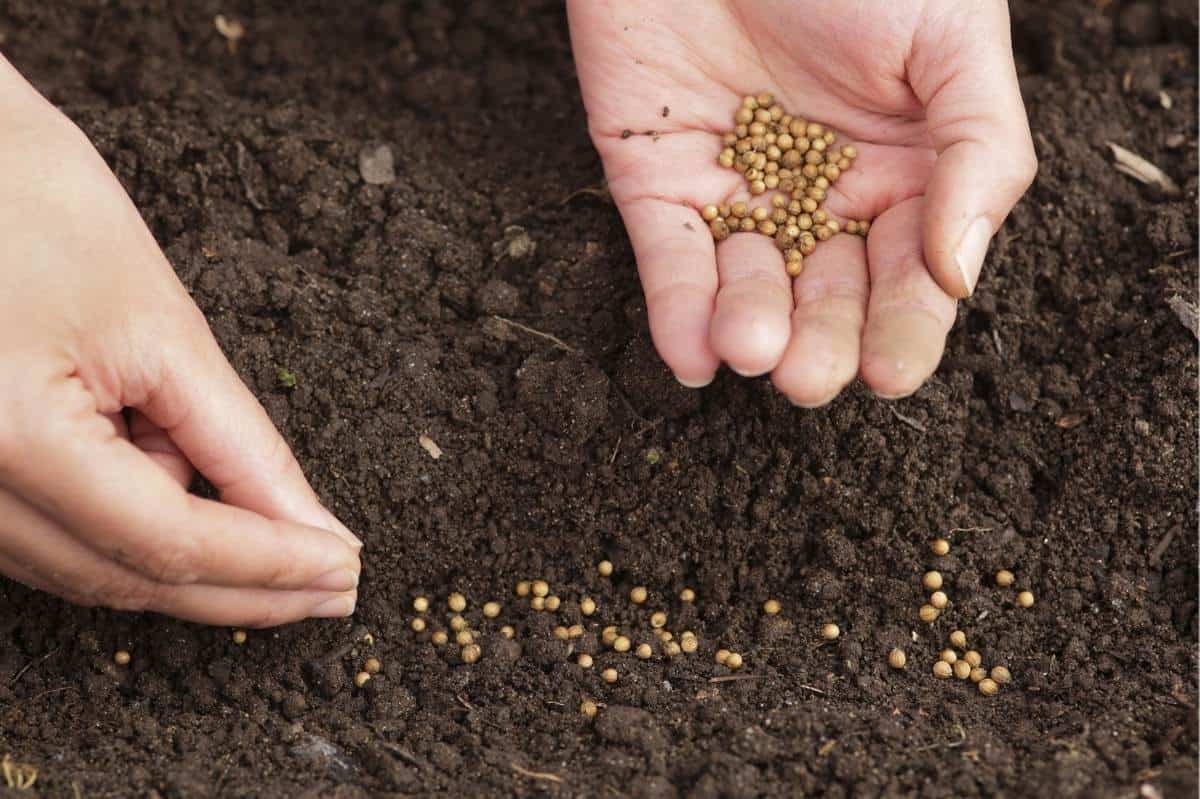
If you are planning on using transplants, be careful not to disturb the taproot of the cilantro plant. Cilantro plants will also need to be transplanted before the taproot can “bottom out” at the base of the seed pot—if the taproot has no place to go, it will send the plant to flower and bolt earlier.
Where do you purchase cilantro seeds?
CIlantro seeds are available from most major seed companies. Here are some of our favorite varieties to try:
- Cruiser Cilantro — This is a classic cilantro that is flavorful, prolific, and easy to grow.
- Slo-Bolt Cilantro — If you live in a warmer climate, this variety that is slower to bolt in warm weather is a good option.
Growfully Protip
Cilantro is easy to save seed from. Just let a few of the flower stalks go to seed, and when they are dried and brown, harvest the seeds both for use as coriander and for planting next year. But beware: cilantro seeds itself very well!
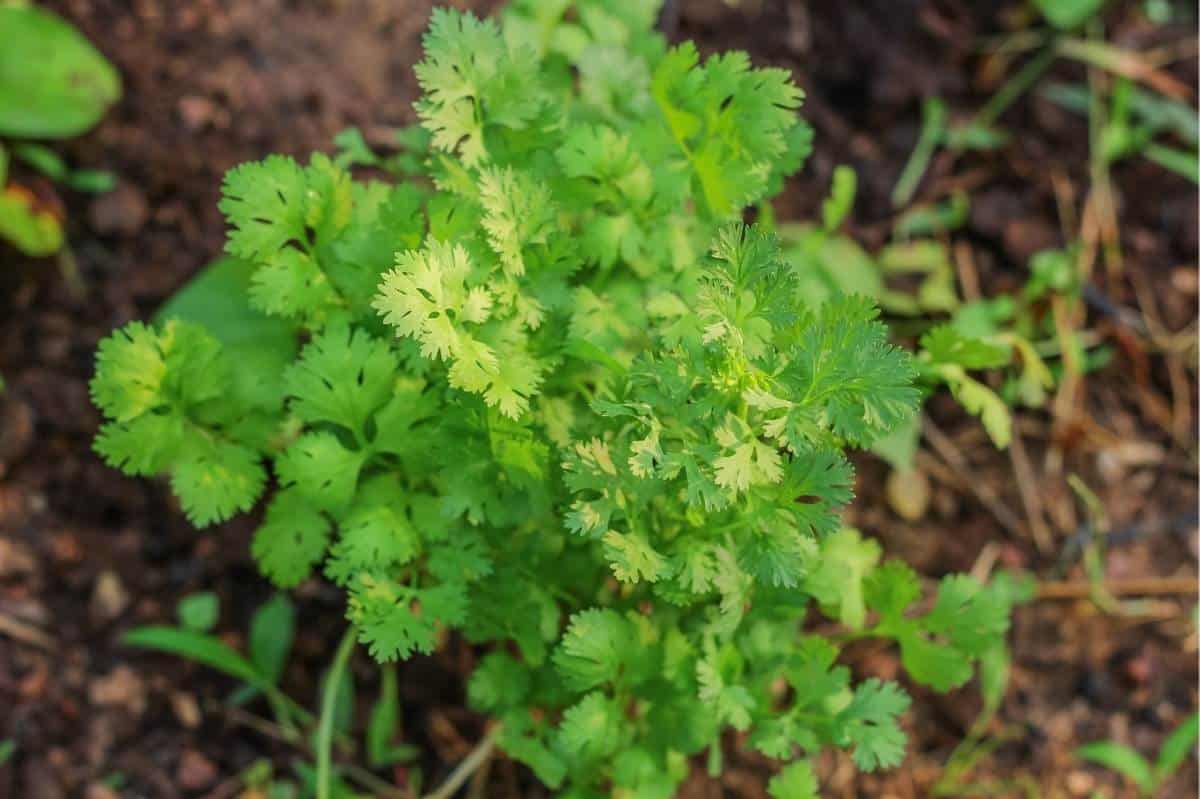
When do I plant cilantro?
Cilantro prefers cool weather and grows quickly in the cool temperatures of mid-to-late-spring and fall. It is hardy down to just above freezing.
You will have good luck direct sowing seeds in the garden when soil temperatures reach above 55°F. If you’d like a head start on your cilantro harvest, you can also plant cilantro seedlings in the garden in late spring or late summer.
Download Printable Cilantro Growing Guide »

How do I prepare the soil for cilantro?
Cilantro likes rich soil high in nutrients and organic matter that drains well. Amend the soil with compost for a great start to your cilantro. It prefers a slightly more acidic soil with a pH of between 6.2-6.8, but it’s a pretty tolerant plant and will grow in a wide variety of soil types. In our Growfully garden, we consistently have success growing cilantro in our soil that is often a pH of 7.0 or above.
Growfully Protip
Cilantro likes full sun. However, in a hot climate, cilantro will tolerate (and even enjoy) a little light shade to help protect it from the heat of the afternoon sun.
How do I plant cilantro from seed?
Plant cilantro seeds ½ inch deep and spaced about 4 inches apart if you are planning to use the plant only to harvest its leaves. If you are planning on growing the plant until it is large enough to produce coriander seed, space the seeds 10-12 inches apart.
How do I plant cilantro from seedling?
Cilantro seedlings have a tap root that you must be careful to not disturb when transplanting. Small transplants are more likely to succeed than larger ones. To transplant a seedling, dig a hole wide enough for the seedling, gently remove the plant, and then place it in the hole. Fill around the cilantro seedling, then gently tamp down with your hands to set the seedling in place. Water well.
Growfully Protip
Because cilantro is a cool weather plant, try to transplant seedlings on a cool, cloudy day.
How long does it take to grow cilantro?
Not long in the right temperature! Cilantro thrives in the cooler temperatures of late spring and early fall, and cilantro plants can easily double in size in just a few weeks. Harvesting cilantro leaves and stems can begin as soon as the plant has stalks large enough to clip off.
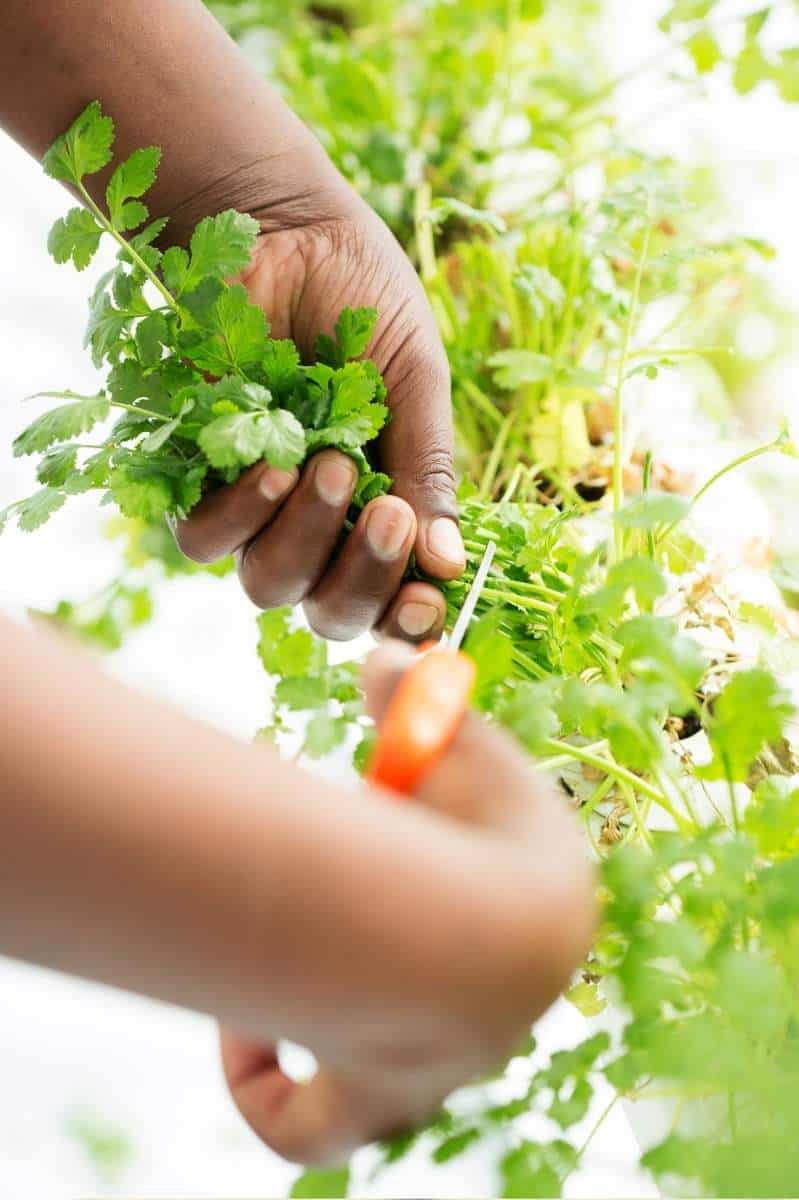
How long does a cilantro plant last?
Cilantro moves through its life cycle very quickly—going from planting to bolting in just a few weeks. If you are growing in a cool or mild climate, your plants will last longer, but in climates where the summers are warm, you’ll be in awe of how quickly cilantro moves on.
To solve this problem and keep you in a constant supply of fresh cilantro, you have two options:
- Succession Planting: Because of cilantro’s fast life cycle, many gardeners plant new cilantro seeds every 2-3 weeks to keep them in the cilantro business.
- Start a Cilantro Patch: If you have an entire patch you can dedicate to cilantro, you can let cilantro do the succession planting itself by letting it go to seed, drop seeds in the patch, and regenerate every few weeks. Here in Southern Indiana (Zone 6B), we’ve easily gotten 3-4 rounds of cilantro using this method between our last frost date and first frost date.
What grows well with cilantro?
Because of cilantro’s speedy life cycle, it produces flower stalks earlier than many other plants in the garden and can become a rare source of pollinator food in the early spring. This can help attract natural predators for some pests to your garden. Cilantro plants can help repel potato beetles and spider mites. And it can help attract hoverflies and soldier beetles, which are natural predators of aphids.
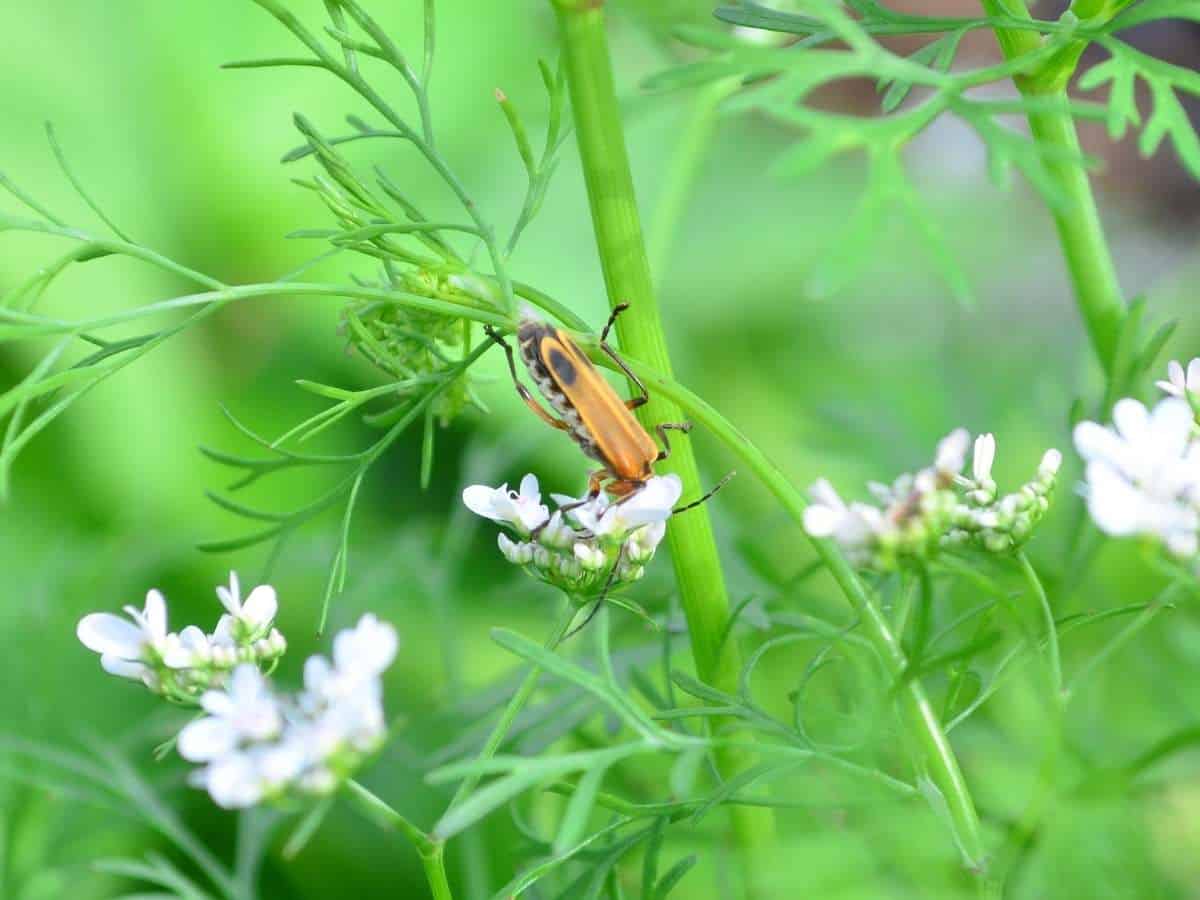
Because cilantro enjoys some light shade in the afternoon, it’s also a good option to plant under or near taller plants, like tomatoes, peppers, or sunflowers. Beans, peas, and lupines, in particular, are also great options because they fix nitrogen to the soil—and cilantro will consistently have darker, bushier plants with good nitrogen levels in the soil.

How do you care for cilantro?
Cilantro is a very easy plant to care for, especially if you have rich, nutrient-dense, well-drained soil. The most important things to remember about cilantro:
- Cilantro is a cool weather herb. It enjoys some light shade in the heat of the afternoon, and it will bolt quickly when it’s warm. You can help keep it cool with mulch and regular, even watering, but just know that frequent bolting is one of the quirks of cilantro!
- Nitrogen is cilantro’s friend. Fertilizing isn’t necessary with rich soil, but a balanced or nitrogen-leaning fertilizer is a good option for keeping cilantro happy. We typically fertilize cilantro with both feather meal (a slow-release nitrogen fertilizer) and fish emulsion (a fast-acting source of nitrogen) occasionally through the growing season.
- Use those herbs! Most herb plants, cilantro included, love to be pruned and used. Frequent clipping of cilantro leaves and stems makes for a robust, bushier plant that is slower to bolt. So use your cilantro!
Can I grow cilantro inside?
Cilantro is a great option for an indoor herb garden, and in fact, the cooler, consistent temperatures of indoors may help delay the bolting of a cilantro plant.
Growfully Protip
Cilantro plants have a taproot, so it’s important to use a large enough pot to accommodate the roots when planting indoors. We recommend a pot at least 10-12 inches deep.

How to Grow Cilantro: Troubleshooting
If you can embrace the short life cycle of cilantro, cilantro is a pretty trouble-free plant to have in your garden. Here are a few small problems you might encounter:
What insect pests cause cilantro problems?
Like most pungent herbs, cilantro is extremely pest-resistant. It’s rare to have an infestation on cilantro. Occasionally, you may have problems with armyworms or cut worms destroying small seedlings—but this typically only happens when there is a previous infestation in the garden that hasn’t been dealt with. Aphids sometimes do arrive on cilantro, but typically the populations stay low, and can be dealt with by pruning off the infested stalks.
What diseases infect cilantro?
It’s rare for disease to infect cilantro crops. However, some fungal diseases that thrive in damp conditions might cause problems including powdery mildew (a fungus—Erysiphe sp.) and leaf spot (a fungus—Alternaria sp.). Prevention is typically the best way to deal with these diseases. Make sure to purchase high quality seed, plant cilantro in well-drained soil, and don’t overcrowd the plants (this prevents air circulation).
Download Printable Cilantro Growing Guide »

Help, my cilantro’s leaves are turning yellow!
Yellowing leaves are a sure sign that your cilantro plant is stressed. The number one reason why a cilantro plant’s leaves will yellow is because they are overwatered. Cilantro prefers well drained soil, and doesn’t like to have wet feet.
Cilantro plants will also start to yellow if they are lacking in nitrogen, if they are in too small of a pot, or, in rare cases, if they are infected with leaf spot. Leaf spot will show up as small spots that turn yellow and brown, instead of a general yellow tint to the leaves.
UGH. My cilantro won’t stop bolting!
Cilantro has a short life cycle, and if you’re new to growing it, it can be frustrating to have a plant throwing up flower stalks constantly! Here are some things you can do to delay bolting:
- Keep your cilantro plant cool by using mulch or providing it with some light shade in the heat of the day.
- Harvest from your plant regularly.
- Plant a slow bolting variety.
Overall, we recommend you embrace the bolt! Cilantro is going to bolt, and if you plan for it, you can enjoy the coriander seeds from the plant, and you can have succession plants ready to go with fresh leaves.
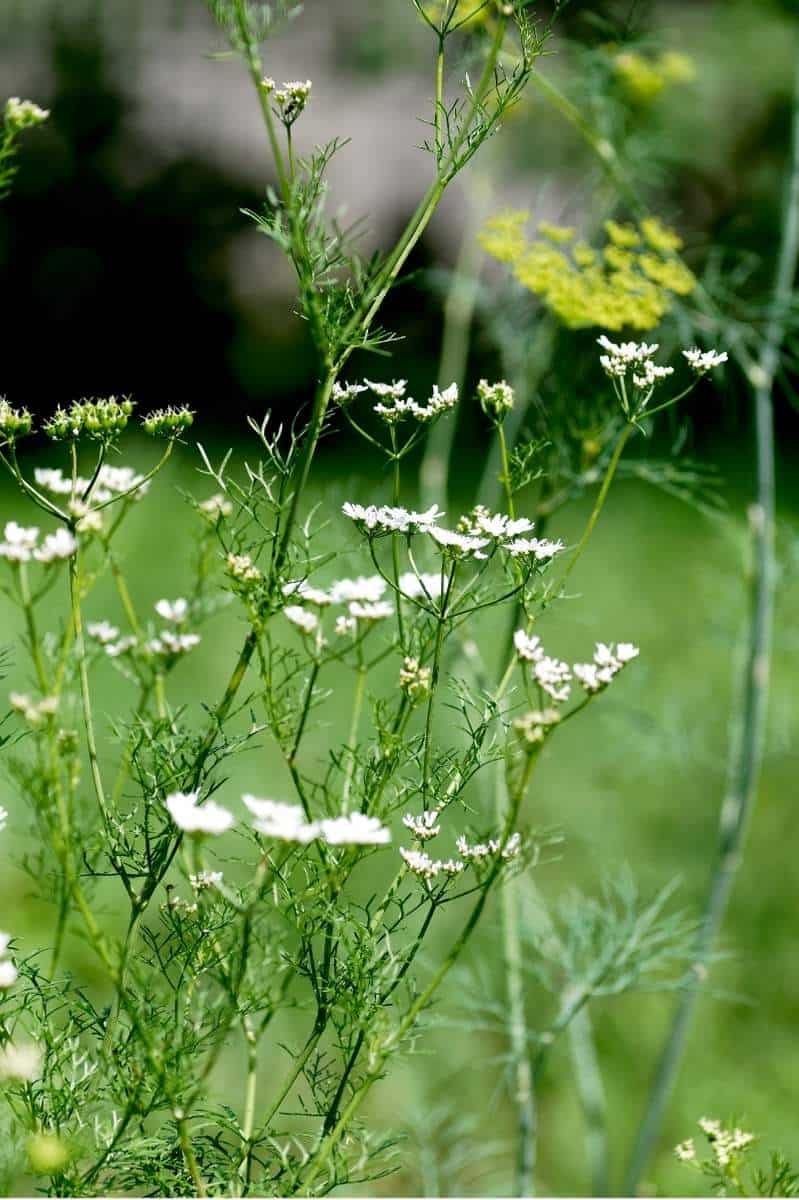
Download Printable Cilantro Growing Guide »
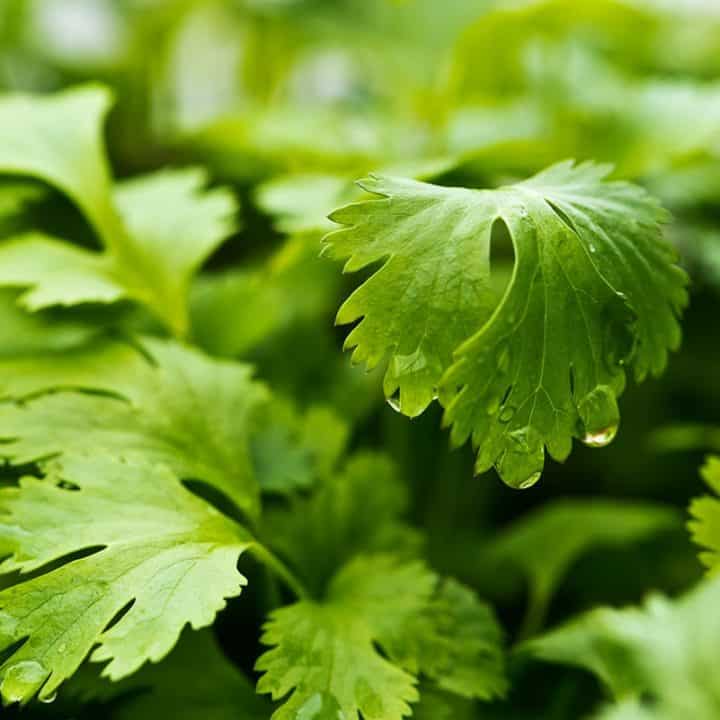
Quick Guide to Growing Cilantro and Coriander
Materials
- Cilantro seeds or seedlings
Tools
- Rich, well-draining soil
- Cilantro growing guide
Instructions
- Let there be light. Cilantro likes full sun, but will thrive if given some light afternoon shade in hot climates.
- Keep it cool. Cilantro will be quick to bolt in the hottest parts of summer, and does better in the spring and fall. A layer of mulch will help keep the plants cool.
- Be careful of the taproot. If you opt for seedlings instead of seeds, be sure not to disturb the taproot when transplanting to soil, or the cilantro will bolt faster.
- Take advantage of companion planting. Cilantro will attract beneficial insects to your garden and repel pests. Plant it with tall plants, like tomatoes or peppers.
- Add some nitrogen. Nitrogen will help make your cilantro plants bushier, so plant cilantro near nitrogen-fixers, like beans or peas.
- Embrace the bolt. Cilantro is going to bolt, but that just means you can harvest some coriander and have seeds for the next round of planting!







